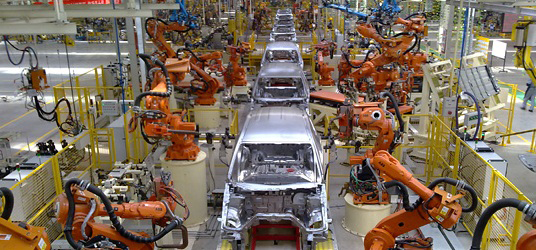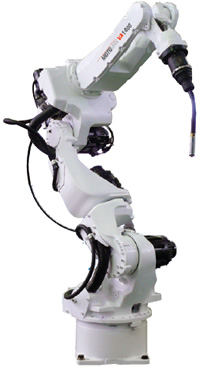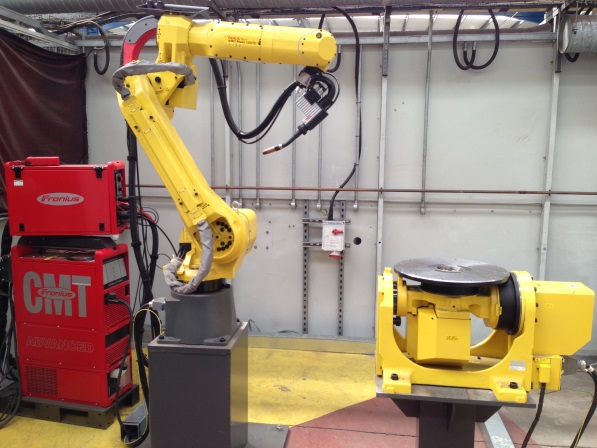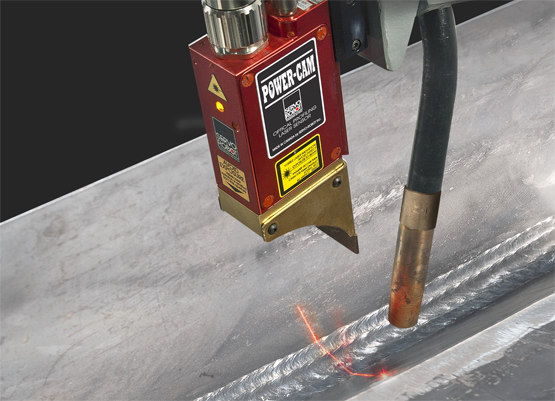Arc Welding With Continuous Path Control
Introduction
The development of automated arc welding solutions continues to be driven by the requirement for higher product quality, productivity and reduced costs. In addition, good manufacturing system flexibility, which is essential for responding to the dynamic behaviours of the market and therefore keeping products competitive, has become a key development target for the manufacturing industries. As a result, robotic welding processes offer attractive alternative solutions to traditional manual operation and hard automation.
Since the first application of a welding robot in industrial production in the early 1960s, robotic welding has expanded across a range of manufacturing industrial sectors. Between 2010 and 2013 alone, over 600,000 industrial robots were commissioned globally [ 1]. Robotic welding has been recognised as the most popular industrial application of robotics worldwide [ 2]. It is estimated that approximately 25% of all in-service industrial robots are employed for welding operations [ 3]. Automotive manufacturing (Figure 1) represents the most active industry sector in terms of robotic welding adoption (approximately 40% of total global robot supply), followed by the electrical and electronics industry (approximately 20% of total global robot supply). Apart from resistance spot welding, the two most common robotised welding processes for production purposes are metal inert gas (MIG) welding and tungsten inert gas (TIG) welding respectively.

Figure 1 Robotic welding used in automotive production (photo copyright @ ABB)
Basics of robotic arc welding
A basic robotic arc welding system is formed by two subsystems: the welding equipment delivering the energy from the welding power source to the workpiece, and the robot providing relative positioning of the heat source and the workpiece. Normally six-axis industrial robots comprising a three-axis lower arm and a three-axis wrist are used, since they enable the welding torch mounted at the wrist to achieve all the positions necessary for three-dimensional welding. Traditionally, general purpose industrial robots are employed, carrying arc welding torches as end effectors. Many robot manufacturers have recently developed arc welding-specific robots, which are smaller and less expensive. This reduction of the required capital investment has further increased the sale of robotic welding systems. Another recent development in welding robotics has been the introduction of seven-axis robots, which feature an additional axis in the lower arm providing additional flexibility and saving floor space (Figure 2). The major characteristics of industrial robots are summarised in Table 1.

Figure 2 Seven-axis welding robot (photo copyright @ Motoman)
Table 1 Typical characteristics of an industrial arc welding robot
| Payload | 2 to 30kg |
|---|---|
| Axes | Six to seven |
| Velocity | Up to 5m/s |
| Acceleration | Up to 25m/s2 |
| Repeatability | ≥0.05 mm |
| Communications | Profibus, DeviceNet, CANopen, Ethernet/IP and serial channels |
| IO capabilities | Digital/analogue IOs |
In a production environment, workpiece manipulators are frequently implemented as part of the robotised system. The devices extend not only a welding robot's working range but also its accessibility, especially when welding complex and large geometries. The control of a manipulator is often integrated with that of the robot, which enables the synchronised and simultaneous control of the two mechanisms. The integrated control allows coordinating motion between the robot and manipulator (workpiece) which maintains the optimum welding positions (higher deposition rate and quality) and possibly increases the welding speed (higher productivity). Figure 3 shows a six-axis industrial robot integrated with a cold metal transfer (CMT) arc welding system and a two-axis workpiece positioner at TWI Cambridge.

Figure 3 Robotic CMT welding cell at TWI (photo copyright @ TWI)
Process sensing
Robotic welding is a challenging combination of welding, robotics, sensor technology, control systems and artificial intelligence. Driven by the increasing demands of improved quality, productivity and flexibility, precise and adaptive control of the robotic welding processes has become a crucial target for the development of modern systems. Sensing technologies designed for welding and its automation are the essential elements for enabling this desired level of control. The sensors are applied to observe and measure process parameters, acting as the sources of input to the control system. By acquiring and analysing the input information from the sensors, the control system adapts output of the robotised welding process in accordance with the defined welding procedure specifications.
There are various types of sensors available for robotic arc welding applications. Depending on their functions, the sensors are classified into two categories: process and geometrical. The former measure the process parameters of the robotic welding process (eg arc voltage, current, wire feed speed and torch rotation), which determine the stability of the process. The latter measure the weld joint geometry (eg gap sizes, weld size changes, deviation from the nominal path and orientation changes) and are used for weld searching, seam tracking and real-time adaptive welding.
Table 2 Typical sensors used in robotic arc welding
| Function | Sensor |
|---|---|
| Welding current measurement | Hall effect sensor |
| Current shunt | |
| Arc length control | Voltage sensor |
| Distance control | Capacitive sensor |
| Weld edge searching | Tactile (electrical contact) sensor |
| Proximity sensor | |
| Weld seam tracking | Tactile (mechanical contact) probe |
| Eddy current sensor | |
| Through-arc sensing (weaving with electric measurement) | |
| Vision sensor | |
| Laser scanning (Figure 4) | |
| Weld penetration monitoring | Infrared radiation sensor |
| Ultrasonic sensor | |
| Weld pool monitoring | Vision sensor |
| Thermal imaging | |
| Weld quality inspection | Eddy current sensor |
| Ultrasonic sensor | |
| Laser scanning |

Figure 4 Laser scanning used in robotic arc welding (photo copyright @ Servo-Robot)
Key issues
The benefits of implementing robotic arc welding are evident but there are some issues associated with it which should not be ignored. Robotised technology is a good solution to fill the burgeoning skills gap in welding fabrication industry, but using and programming the industrial robots is still a complex and difficult task for regular operators. Despite the fact that modern sensing techniques for robotic arc welding are readily available and reasonably reliable, it is still challenging to effectively and efficiently apply them in some applications. The high temperature, intense light from arc, fume, high current, molten metal, spatter, and other factors involved in arc welding can interfere with the sensors. Developing a control system which can fully utilise the information obtained by the sensors and effectively translate it to the fabrication is still a difficult task.
Summary
Robotic arc welding is an essential component of today's manufacturing plants. The primary benefit of robotic arc welding is the production of high-quality welds in a shorter cycle time, with manufacturing flexibility another major advantage. Through extensive application in many manufacturing industry sectors, robotic welding has been developed to a mature production method. Strong industrial need continues to drive the rapid development of robotic arc welding and associated technologies to overcome technical difficulties and expand their capability.
TWI has established good experience in robotic welding through its services in generic research, contract R&D, technical information, consultancy, standards drafting, training and qualification. For more information, please contact us.
References
- International Federation of Robotics, 2014, World Industrial Robot Statistics 2014, http://www.ifr.org/industrial-robots/statistics/.
- United Nations and International Federation of Robotics, 2000, World Industrial Robotics 1996: Statistics and Forecast, New York: ONU/IFR.
- J N Pires, A Loureiro and G Bölmsjo, 2006, Welding Robots: Technology, System Issues and Applications, London: Springer-Verlag.
Source: https://www.twi-global.com/technical-knowledge/job-knowledge/robotic-arc-welding-135
Post a Comment for "Arc Welding With Continuous Path Control"